
Although many people mistake corals and anemones as plants, they are actually animals. They are part of an ancient and simple group of animals known as cnidaria. Jellyfish are also a member of this group. These animals are characterized by a symmetrical body, usually with stinging tentacles, and a central mouth. A coral structure is actually composed of hundreds or thousands of these tiny animals growing together as a colony. These tiny coral polyps are the builders of the coral reef. Their tiny calcium shells have accumulated over thousands of years to form the largest living structures in the world. The majority of the cnidaria live attached in colonies, but a few are free swimming like the jellyfish. Most of these animals use special stinging cells called nematocysts to catch their prey. A few of them, particularly the jellyfishes, are capable of inflicting extremely painful stings on humans. The anemones are well known for establishing a symbiotic relationship with members of the clownfish family. This is a special living arrangement where both animals work together to benefit each other. The anemone provides protection for the clownfish, and the clownfish in turn provides food for the anemone. Below is a listing of some of the more common members of the cnidaria group.
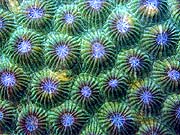
The pineapple coral is a species whose small polyps form flat, honeycomb patterns. The colony as a whole forms a large dome-shaped structure. The polyps are usually green or brown, but can also be found in red or orange. They feed at night by extending their delicate, translucent tentacles.
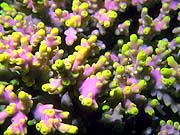
The staghorn coral is a hard coral species that forms a branching structure resembling the horns of stag deer. The colonies are usually golden-brown with pale tips, but can also range from blue to pink, purple, orange, green, and yellow. This coral is common throughout Caribbean region.
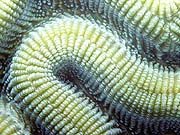
There are several varieties of brain corals found throughout the world. The all get their name from the brain-like ridges that cross their surface. The smooth brain coral grows in a large dome-shaped structure about 4 feet in diameter. It is a common species in the Caribbean from Florida to the Bahamas.
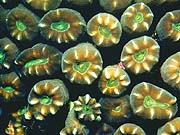
The torch coral is a beautifully colored species with a candy-like appearance. In fact it is also known as the candycane coral. The polyps are brown with yellow stripes, and their insides are neon green. They are often found in small, tight clusters. This coral is nocturnal. It extends its delicate tentacles to feed at night.
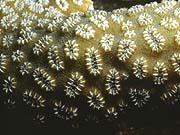
The star coral is one of the hard coral species that contains a stone-like calcium skeleton. Small, oval stubs rise from the yellowish-tan central core, each containing a delicate white star-shaped polyp. The Star Coral is commonly found throughout the Caribbean and the West Indies, and usually grows to about 12 inches in height.
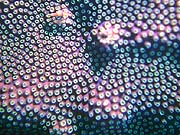
The cup coral is a hard coral species that grows in a variety of shapes. The hard coral skeleton is covered with small bumpy growths. Delicate flower-like polyps emerge when the coral is feeding. This coral is usually found in colors ranging from yellow to purple, gray, green, and brown. It is found throughout the Indo-Pacific region.
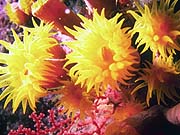
This beautiful orange and yellow hard coral prefers dark locations, and can be found lining the mouths of submarine caves and crevices. They usually have a bright orange, stony base with colorful yellow polyps. This coral is common throughout the reefs of the Indo-Pacific region.
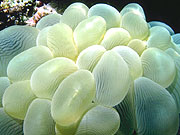
The bubble coral is a curious looking species. It has rounded, bubble-like polyp vesicles that expand during the day. These bubbles are used to collect light, which is essential for the coral's growth. At night, the polyp tentacles expand for feeding. The bubble coral is common throughout the Indo-Pacific region and Australia.
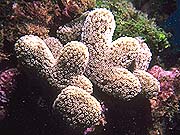
The clubbed finger coral is a common species throughout the coral reefs of the Caribbean and the Gulf of Mexico. The polyps have long flower-like tentacles that grow in thick clumps. The colony forms long branches, which are swollen on the ends. These branches usually reach a length of about 12 inches.
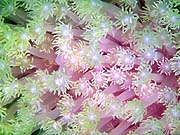
The flowerpot coral is one of the most beautiful coral species. It has a hard dome-shaped base from which emerge hundreds of delicate flower-like tentacles. The tentacles wave in the currents, and are green in color due to the presence zooxanthellae algae. This coral is common throughout the Indo-Pacific region.
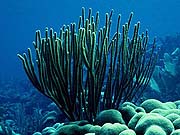
The sea whip is a coral species that grows in clusters of long finger or whip-like shapes. They are usually pale tan or yellow in color, and are found throughout the tropical coral reefs of the Caribbean and the West Indies. The whips are covered with thousands of tiny anemone-like coral polyps, which filter nutrients from the water.
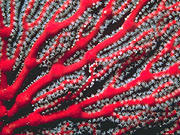
Sea fans are very closely related to sea whips. The main difference is that the sea fan takes on a more flat appearance where several offshoots intertwine to create a fan-like appearance. They are very common in the Caribbean region where they can be found in colors ranging from red to yellow and purple.
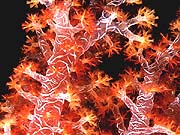
The soft red cauliflower coral is perhaps the most beautiful of all the corals. Common in the Indo-Pacific regions, this coral can be found in large numbers all along the rocky coral reefs. Its flowery translucent structure can range in color from bright red to deep orange. This nocturnal species feeds at night and contracts into a tight ball by day.
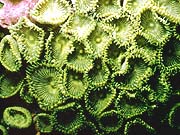
The sea mat is actually a small anemone-like soft coral polyp that grows in large colonies. Each polyp is about 1/4 inch in diameter, but the colonies can reach an area of several square feet. They can be found frequently covering rocks and dead coral skeletons on the coral reefs of the Bahamas and the West Indies.
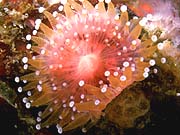
The club-tipped anemone gets its name from the rounded growths on the end of its tentacles. This small 1-inch anemone is translucent and ranges in color from red to pink, orange, purple, and brown. It is commonly found near the rocky shores of the Pacific coast from Northern California to the Baja Peninsula.
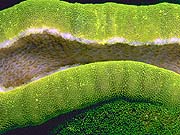
The carpet anemone is one of the largest of the anemone species. Some specimens can reach a diameter of 39 inches. The short tentacles of this anemone deliver a sting strong enough to cause an uncomfortable rash on unprotected skin. The animal uses these stinging cells to subdue its prey, the occasional unwary fish.
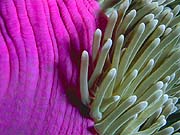
The purple base anemone is one of the large species that can be found making a home for clownfishes. It is found throughout the Indian Ocean and the Indo-Pacific regions. This anemone's bright purple base is tipped with bright green tentacles. The green color is produced by the symbiotic algae, zooxanthellae.
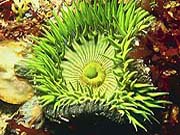
This beautiful bright green anemone can grow to a diameter of 12 inches. Its color can range from green to gray or blue-green. It is characterized by short, thick tentacles arranged in rings around the central mouth. This anemone is found on rocks and tidepools all along the Pacific coastline from Alaska to Panama.
Sponges & Sea Squirts | Corals & Anemones | Sea Worms | Echinoderms
Crustaceans | Mollusks | Coral Reef Fishes | Unusual Reef Fishes
Sharks & Rays | Marine Reptiles | Marine Mammals